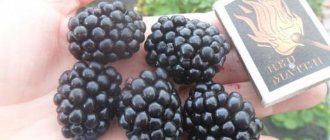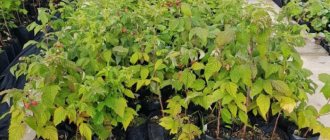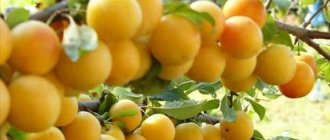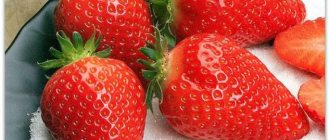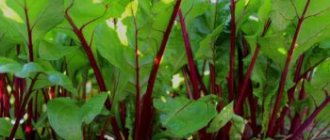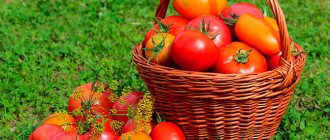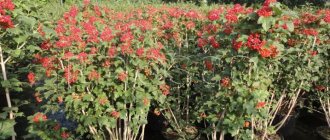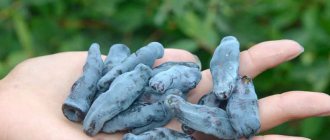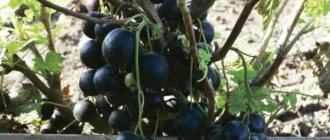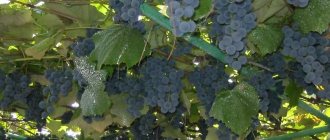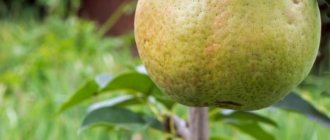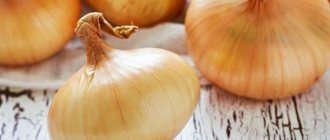Features of columnar varieties
Columnar varieties of cherries are used in industrial gardening and are also suitable for planting in small garden plots. With proper care, they produce a bountiful harvest every year.
Columnar cherry is distinguished by a powerful straight trunk and short shoots. Side branches are missing or cut short. Thanks to this crown shape, the tree occupies a very limited space on the site. There are dwarf species with a height of no more than 1.5-2 meters. They are suitable for growing in tubs and can take their rightful place in a greenhouse or winter garden.
The advantage of columnar cherries is the combination of decorative properties, good yield and high taste of the fruit.
Description of culture
Cherry is considered a leader in the content of useful substances in its composition:
- glucose;
- coumarin;
- vitamins C, E, B9;
- trace elements (sodium, zinc, boron, fluorine, magnesium);
- acids (malic, salicylic, citric);
- pectins;
- fructose.
anthocyanide;
This is only a part of the beneficial components that are contained in the fruits of each cherry variety. Together, they support the normal functioning of internal organs, act as a prevention and treatment of kidney diseases, anemia, and arthrosis.
For your information! Vitamin B9 (folic acid), which cherries are rich in, strengthens blood vessels.
Thanks to the high content of pectins, cherries are able to remove toxins and waste. In case of bacterial diseases, eating berries promotes a speedy recovery. Cherry juice is used as a cancer preventative because it contains ellagic acid. In case of cardiovascular diseases and stomach diseases, the berry normalizes natural processes. Some components of cherries suppress the development of epilepsy and jaundice (infectious).
But the berry is popular not only due to its medicinal properties; it serves as a decoration for areas. During the flowering period, the tree is completely covered with a white head of flowers, and this beauty cannot be compared with anything.
Advantages and Disadvantages of Culture
The main feature of this type of fruit tree is the lack of branching. The crown is formed by shoots growing vertically upward and is quite compact. All the tree’s nutrients are aimed at the formation of fruit shoots, which ensures good quality and abundance of fruits. The benefits of columnar cherries are based on these properties:
- High decorative possibilities. The trees are most beautiful during the period of dense flowering and fruiting.
- Unpretentiousness, ease of cultivation and care.
- Compact shape, the ability to grow crops in a small area.
- High yield and early fruiting - berries appear already from the second year of tree life.
The main disadvantage of columnar cherry varieties is their fragility. This leads to the need for frequent (every 20 years) garden renovation. Another drawback is low frost resistance. In addition, seedlings of columnar varieties are more expensive compared to other varieties.
Tips and tricks
By giving preference to dwarf trees, you can afford to plant many more varieties and varieties on your site, since the planting density is much higher. At the same time, nothing prevents you from arranging a two-tier garden, surrounding fruit trees with various shrubs: currants, raspberries, gooseberries and others.
If a garden is created in Siberia, in the Urals, then even when choosing the most winter-hardy varieties, it is recommended to create shelters for the trees.
There are several options for covering columnar fruit trees:
- Cover the crown with agrofibre. The panels can be reused the following year, and it is best to attach them to the trunk with ordinary twine.
- Use safety cones. Such a cone is a wooden frame made of slats, onto which agrofibre is stretched. In the spring, the cones are stacked until the fall.
It is worth recognizing that interest in columnar fruit trees is growing steadily. Gardeners are not deterred by high prices for seedlings, which can reach up to 1000 rubles. per piece and even higher. The excellent taste and commercial qualities of the fruit pay for the investment within a few years. In addition, many columnar varieties of fruits can be propagated independently, using branches of the grown mother plant for grafting.
Habitat
Columnar cherries are ideally suited to the climate of the south of Russia and its Central zone. It takes root well in windless areas with a lot of sunny days, in areas with loose, fertile soil.
In northern regions with short summers, the crop often does not have time to take root and freezes out.
In garden plots in Moscow and the Moscow region, columnar varieties should be planted in the spring. In the southern regions, trees planted in both spring and autumn are well received. Fine sunny days contribute to their timely rooting and adaptation.
Why don't cherries bear fruit?
It is very important not to plant juniper in close proximity to garden plantings of columnar cherries. It is juniper that contributes to the defeat of cherry bushes by diseases such as rust, which is carried by the wind and can quickly destroy young plantings.
Despite the fact that currently the columnar cherry belongs to the category of rare plants in summer cottages and personal plots in the central zone of our country, there is a tendency to change this situation. The first varieties developed were aimed at growing in warm climates. However, in recent years, breeders have managed to develop more cold-resistant and promising hybrid plants that can be successfully cultivated in most regions of Russia.
Features of cultivation
Breeding columnar varieties begins with the selection and purchase of seedlings. It is recommended to do this in large garden centers or nurseries with a good reputation. Before purchasing, you should carefully inspect the tree, paying attention to the presence of the following characteristics:
- intact bud of the apical shoot;
- smooth trunk with smooth bark;
- powerful root system without rot;
- healthy foliage.
Site selection and preparation
When choosing a site, special attention is paid to its location and soil quality. Columnar cherry plantings are allocated to areas protected from the wind and with sufficient lighting. The ideal type of soil is chernozem, without close groundwater.
See also
Step-by-step instructions on when and how to properly plant cherries in open ground
Read
Excessive soil acidity can be reduced by mixing it with wood ash.
Favorable and Undesirable Neighbors
Other varieties of cherry trees are good neighbors for columnar cherries. These are the best pollinators for partially self-fertile varieties.
Columnar cherries should not be planted next to juniper, which is often affected by a fungal disease (rust). Flying spores are highly likely to fall on cherry trees, causing their disease and rapid death.
Planting dates and technology
The right time for planting is spring. You can begin work immediately after the cessation of night frosts, but preparations begin a little earlier. Planting holes with a diameter of 80 and a depth of 70 centimeters are prepared according to the number of future seedlings. The distance between the rows is 3 meters, and between two holes - from 0.5 to 1 meter (depending on the area of the site).
The landing technology is as follows:
- Before planting, prepare a nutrient mixture at the rate of 1 bucket of humus per 3 buckets of chernozem, with the addition of potassium and phosphorus. They pour it into the hole.
- The seedling is placed in the center of the hole, carefully straightening the roots.
- Having strengthened the trunk with a peg, they fall asleep, leaving the root collar outside.
- Thoroughly compact the soil and water the tree generously.
Planting and subsequent care
Despite the low requirements, columnar cherries need to be planted and cared for correctly. Then she will delight you with an abundant harvest of healthy berries.
Landing Features
When buying columnar cherry seedlings, you need to carefully inspect the shoot: the apical bud must be intact and unharmed. Young trees are planted in areas not exposed to cold winds. The site is chosen on the southern sunny side.
The soil for columnar cherries should be loose and fertile. You cannot choose soil that is susceptible to being washed away by groundwater, as well as lowlands. The hole for planting must match the parameters of the root system of the seedling.
Chernozem and humus should be added to the bottom of the prepared pit in advance.
- After planting for 2-3 years, columnar cherries significantly reduce their growth rate. The apical bud requires special attention. It must be properly and promptly prepared for the upcoming frosts. If you allow it to freeze, the tree will stop bearing fruit.
- We should not forget about carrying out maintenance measures that are important for any stone fruit: systematic loosening of the soil, timely irrigation, protection and prevention from diseases and pests.
- You need to loosen the soil and remove weeds in the spring, but you need to maintain order throughout the entire period of active development of the tree.
Watering and fertilizing
The plant is very moisture-loving, but will not tolerate excessive soil moisture. During the phase of active growth and at the stage of fruit formation, it is recommended to moisten the plant more often and more abundantly. The best option would be to water with the simultaneous application of mineral fertilizers to the soil.
In autumn it is better to apply phosphorus-containing fertilizers: 150 g per 60 g of potash. Minerals of the nitrogen group are usually introduced under the plant itself in the first week of March. During the awakening and active growth phase, you will need to fertilize 2 times.
During the period of color fading and after it, for another 2 weeks, it is necessary to add mullein diluted with wood ash. Half a bucket of well-infused fertilizer is poured under each fruit.
Prevention measures
To protect the cherry from brown or pinhole spot, false polypore, and scab, it must be treated in a timely manner with diluted Nitrafen or Bordeaux mixture. It is permissible to use fungicides and whitewash trunks.
These preventive measures will protect cherries from burns and invasion of insect pests: caterpillars, moths, weevils. Whitewashing will also get rid of possible pests that could remain in the bark over the winter.
Preparing for winter
The most important thing in caring for a columnar fruiting plant is its preparation for winter. To preserve the original crown of the fruit tree, the apical bud of the main shoot must not be allowed to freeze.
After abundant autumn watering, the space around the trunk must be mulched with a generous layer of sawdust or peat. The snow is raked up to the standard and compacted. Sawdust is poured onto the snowdrift. They prevent premature snow melting.
Due to the fact that columnar cherries are modest in size, they can easily be protected from frost. It is enough to install supports around the trunk, then cover everything with burlap or non-woven material.
How to care for culture
Caring for columnar cherry seedlings involves timely watering and fertilizing, crown formation, and protection from diseases and pests.
Regularity of watering
For normal growth and development of seedlings, moist and oxygenated soil is necessary. To do this, as it dries out, water and loosen the near-trunk soil. One tree should receive from 2 to 5 liters of water. During the period of ovary formation, it is important to increase the amount of watering, especially in dry times. Immediately after watering, loosening and weeding, mulching is carried out.
Young trees benefit from frequent weeding. Weeds take away nutrients and moisture from them, which significantly slows down growth and development.
What and when to feed a tree
During the year, cherries need to be fertilized three times:
- in spring, nitrogen-based preparations (ammonium nitrate or urea) are used;
- in the fall, phosphorus and potassium fertilizers are applied;
- at the end of flowering, half a bucket of rotted manure mixed with a small amount of ash is poured under each tree.
Features of crown formation
Pruning is carried out according to a specially designed scheme, since classical methods do not give the desired result.
- In the first year, the top is removed, and the side branches are also pinched at a distance of 10 centimeters from the main trunk.
- In the second and third years, side shoots are pinched at a distance of 20-30 centimeters from the trunk. The top is trimmed to approximately the same distance.
- In the fourth year, thin branches shading the trunk are cut off.
- In the fifth and subsequent years, the top is trimmed to prevent the tree from growing upward.
- In the sixth and subsequent years, they get rid of side shoots that break the shape of the crown.
Susceptibility to diseases and pests
Through long-term selection, varieties resistant to diseases and pests were bred, but some susceptibility to fungal and viral infections (coccomycosis, moniliosis), brown and perforated spot (klyasterosporiosis) still remained. Trees may also suffer from attacks by caterpillars, cherry weevils, codling moths, and cherry aphids.
Treatment
The most effective method of protection against coccomycosis and moniliosis is spraying with Bordeaux mixture and fungicidal preparations (Pthalan, Kuprozan, Zineb).
When fighting hole spot, diseased branches are cut out, the affected areas are treated with garden varnish, fallen leaves and fruits are collected and burned.
The most popular methods of controlling garden pests are the use of universal insecticides, such as Intra-Vir, Iskra.
Traditional methods of treatment are also used - treatment with a solution of laundry soap with the addition of tobacco extract.
See also
Treatment of gum disease in cherries using folk remedies and chemicals
Read
Preventative treatments
Numerous preventative measures help reduce the risk of disease. They regularly inspect cherry trees, remove diseased leaves, spoiled and rotten fruits. Spraying with infusion of garlic, onion peels, and a solution of wood ash is also used. To protect against hares that damage the bark, tree trunks are covered with a special net or spruce branches.
Preparing plants for winter
Most varieties of columnar cherries are not resistant to winter frosts. In the fall, special preparation of plants begins to help them survive the cold season safely. The main measures to protect against frost are as follows:
- Treating trunks with lime mortar will help protect plants from frost and bright sun.
- Abundant watering and mulching will saturate the plants with moisture before the onset of the dormant period.
- Insulation with burlap or agrofibre will protect the trunk and apical bud from freezing.
- A wooden frame around the trees and subsequent wrapping will serve as protection in severe frosts.
Possible pests and diseases
Among the most common problems of columnar cherries are cleasterosporiasis (characterized by the appearance of holes on the leaves and ulcers on the shoots), fungal diseases (especially coccomycosis and fruit rot), as well as pest damage:
- cherry weevil (feeds on the juice of buds, flowers and fruits of cherries, leaving a large number of passages in them);
- cherry sawfly (feeds on the sap of leaves and lives mainly on the inside of the leaf, over time causing the leaf blade to dry out and die);
- leaf aphids (sucks juice from different parts of the plant, causing the cherry leaves to curl and the branches to be severely deformed);
- hawthorn caterpillar (eats leaves and buds, leaving holes in them and significantly reducing the abundance of the cherry harvest).
To combat fungal diseases, gardeners use popular fungicidal preparations (for example, Fitosporin or Bordeaux mixture), and to remove pests they will have to choose one of the effective insecticides (for example, Piriton, Actellik or Rovikurt). In addition, folk remedies can be no less useful.
Thus, to get rid of aphids, tobacco infusion with the addition of laundry soap is successfully used, and to solve the problem with the hawthorn caterpillar, you can prepare an infusion of onions, garlic and shag.
For preventive purposes, at the beginning of the new season (before the trees bloom), the plants are sprayed with Bordeaux mixture or one of the systemic fungicides, additionally whitewashing the tree trunks.
Of course, at the first sign of any problem, you will have to immediately remove the affected parts of the cherry, thereby preventing the further spread of the problem. This also applies to damage from pests that are simply shaken off the trees.
Reproduction methods
The most popular methods of propagating columnar cherries are grafting and cuttings. The grafting is carried out on two-year-old trees. When cutting, suitable shoots are selected, cut and treated with root formation stimulants. Then they are planted in the ground, where rooting occurs.
Propagation by seeds is practiced less frequently, since sometimes valuable varietal characteristics are lost.
Pre-sprouted seeds are sown in individual containers and placed in a warm place for the winter. In the spring they are planted in open ground, and after strengthening - in a permanent place.
Main characteristics
Cherry Vostorg is a conditionally columnar variety. It is suitable for growing in small areas in regions with warm winters. But before purchasing a Delight cherry seedling, it is important to read the description, reviews and view photos.
Drought resistance, frost resistance
Pyramid cherry Delight is not a winter-hardy fruit crop. Therefore, it is not recommended to grow the plant in regions with cold winters. But if you like the variety, and the weather does not allow it to be grown without shelter, then the tree is wrapped in agrofibre for the winter, and the soil is insulated with a layer of mulch.
The root system of the fruit crop is located superficially, so in dry summers the tree is watered regularly and abundantly. At least 1 bucket of water is consumed per plant.
Productivity
Cherry Vostorg is a mid-season variety. The seedling begins to bear fruit 2-3 years after planting. The berries ripen in mid-July; if agrotechnical rules are followed, up to 35 kg of tasty and healthy harvest can be harvested from an adult tree. The volume depends on compliance with care rules, weather conditions and the presence of pollinating varieties.
Since the berry has juicy, sweet pulp, it is used to make compotes, preserves and jams. It can also be dried and frozen. For harvesting, choose a sunny, low-wind day. The collected berries are placed in boxes covered with paper. Without additional processing, the harvested crop remains fresh for a week if stored in a cool room.
The harvested crop will be enjoyed by children and adults
Advantages and disadvantages
Cherry Delight, like any fruit crop, has its positive and negative sides. The advantages include:
- productivity;
- compact size;
- unpretentiousness;
- decorative appearance;
- immunity to many diseases;
- good taste.
Disadvantages include partial self-sterility and low frost resistance.
Popular varieties of columnar cherries
Gardeners love to breed columnar varieties of cherries, noting their unpretentiousness, good survival rate and abundant fruiting. The main difference between the varieties is in the timing of cultivation, fruit size, and taste.
Ashinsky varietal hybrid
The Ashinsky hybrid is a low (no higher than 2 meters) tree that annually produces a bountiful harvest. The berries ripen in the second half of July, have a pronounced taste and aroma, and have a fleshy structure. They tolerate transportation well.
Baby
Malyutka cherries are bright and have a sweet and sour taste. The trees are productive and are often used in landscape design. The variety is self-fertile.
Delight
Trees of the Delight variety reach two meters and are productive. The variety is early ripening, the fruits are heavy (up to 15 grams), sweet and fleshy.
Queen
A late variety, distinguished by large, dark berries. Trees up to 2.5 meters high are frost-resistant and immune.
Helena
Trees of the Helena variety reach a height of 3 meters and produce dark red berries with fleshy pulp. They have a long fruiting period. The variety is early ripening and requires careful care.
Silvia
The Silvia variety is identical to the Helena variety, but the fruits ripen even earlier (in the first half of June). It is characterized by low frost resistance and requires special protection from winter cold.
Queen Mary
Trees of this variety are also frost-resistant and grow better in mild winter conditions (in the south of Russia). The berries have good taste.
Black cherry
Black columnar cherries are unpretentious, frost-resistant, and suitable for growing in the harsh climatic conditions of Siberia. Trees have the ability to self-pollinate.
Sabrina
Self-fertile trees with a wide crown. They do not tolerate cold well, but have high immunity and rarely get sick. The berries are large, sweet and juicy.
Revna
The tree has medium-sized fruits (weighing no more than 10 grams), ripening in mid-summer. The berries are fleshy, suitable for canning, and can be stored for a long time.
How and when to plant
The time for planting cherries depends on the region where you live. If you live in the southern regions, with a warm climate favorable for growing, the tree can be planted in both spring and autumn. In cold areas, the situation is more complicated, and a seedling planted in the fall may not have time to gain a foothold before frost, which is why it will die in the future.
Cherry trees should be planted in the spring, but only after the risk of night frosts has passed. If the seedling was purchased in the fall, the best option would be to bury it shallowly until spring. Planting of cherries is carried out in compliance with the following standards and requirements.
How to plant cherries:
- The purchased seedling must be planted as quickly as possible so that the roots do not have time to dry out.
- The required distance between trees is at least one meter. The distance between rows is one and a half to two meters.
- The planting site must be chosen as lightly as possible, protected from wind and drafts.
- It is not recommended to plant a tree in lowlands or wetlands. In this case, there is a high risk of root rot, which will affect both the harvest and the general condition of the tree as a whole.
- The hole for cherries should be deep enough - up to 70 cm. The diameter of the hole is 70 - 80 cm.
- The nutrient mixture must be poured into the bottom of the hole. It can be prepared from humus, potassium and phosphorus fertilizers. Approximate proportions: 12–15 grams of minerals per bucket of humus.
- The root collar should not be deepened; it should protrude 2–3 cm above the ground surface. Over time, this level will become level with the ground.
- After planting, it is necessary to water the seedling well, and also slightly compact the soil near the roots, creating a small trench for further watering.
Ovstuzhenka will tell you about the description of the cherry variety in this material.
In the future, fertilizing is carried out approximately once a year - at the beginning of the spring season. As a rule, trees take root well, but you can’t count on early fruiting this year. Many gardeners practice removing flowers from trees in their first year of life so that the plant has enough strength to grow and acclimatize.
It is better to plant in spring
| Baby The berries have an average weight of about 10 g. The plant is self-pollinating, although in the presence of a pollinator the yield is greater. Trees have a height of up to 2 m with a diameter of up to 0.8 m . It is often grown in a pot, as in the example in the photo. Ripening - end of June . High resistance to diseases and pests is noted | |
| Columnar Morozova Large berries weighing about 10 g. Up to 15 kg is removed from the tree in favorable years. Height up to 2.5 m with a diameter up to a meter. Ripens by the end of June . Has good frost resistance |
| Stage 1. Purchase quality seedlings |
It is better to buy planting material in a nursery or at specialized outlets . When choosing, pay special attention to the apical bud; it should not be damaged.
You should choose healthy plants . It is advisable that they be in pots, as in the photo
Proper planting of cherries in the Moscow region
Of all the acclimatized fruit trees in the middle zone, cherries are the most demanding in terms of maintenance conditions. To create a long day, protect it from the wind, and keep the root system in comfortable humidity is the gardener’s task. The future garden decoration is planted on the south side of the building, fence, or a fence is installed. To increase illumination, the reflective surface is painted white. The remaining trees should not cast a shadow on the sissy; they are placed no closer than 7 meters.
In the spring, cherries are planted in the Moscow region on raised ridges. The flowerbed is prepared in advance, in the fall. The soil should settle and compact. The hill warms up faster, and even in heavy rains the ground will not turn into a swamp. The harsher the climate, the larger the area of the flowerbed so that the roots do not freeze in winter.
On this topic:
BACK
FORWARD
1 of 7
When creating a flower bed, it is necessary to provide drip irrigation. The flowerbed dries out faster; watering should take this into account. The mound must be sown with grass mixture:
- clover;
- meadow fescue;
- phacelia;
- white bluegrass.
The grass is regularly mowed, and the ground is mulched with half-rotted manure. Sweet cherries receive enough nutrients; mineral nitrogen is not required.
It is better to plant cherries in the Moscow region, like other heat-loving crops, in the spring. The planting nest is prepared in the fall:
- the pit should be 60 cm deep, 80-100 cm wide;
- in the fall, add a mixture of humus and garden soil; in the spring, loosen the surface of the tubercle with a pitchfork;
- pour a liter jar of ash on top, 2 cups of superphosphate, mix the bottom layer;
- Before planting, keep the roots of the seedling in clean water for 10 hours and in a mash of mullein and clay for 5 hours.
- plant so as not to deepen the root collar.
The roots are sprinkled with garden soil without fertilizers, watered, and the ground is mulched. Don't forget to install a stabilizing stake on the north side of the seedling. The seedling must be purchased from a nursery, zoned. Do not forget that self-fertility in cherries is weak or absent. Further cultivation of cherries in the Moscow region is associated with regular watering, mowing the grass and mulching the soil around the tree trunk.
Rejoice if you managed to buy a columnar cherry seedling. There are not many of them yet. Short stem branches are strewn with berries, fruiting occurs in the year of planting, but it is better to remove the first flowers and allow the tree to gain strength.
They are planted together, grow 3 meters in height and annually produce 12-14 kg of delicious berries. Trees are planted at a distance of 2.5 meters; no formation is required. The declared fruiting period of columnar cherries is 30 years. Shelter for the winter is necessary, since the winter hardiness of clonal cherries is average.
Caring for cherries in Siberia
Note! The main differences between sweet and sour varieties and sweet cherries are smaller fruits and instability to heating (damage to the bark). To get a good harvest of cherries, it is necessary to properly prune the bushes, loosen the soil, water, feed, and also treat them against pests and diseases.
To get a good harvest of cherries, it is necessary to properly prune the bushes, loosen the soil, water, feed, and also treat them against pests and diseases.
Loosen the soil near the trunk of the seedling
For two years after planting, cherries do not require fertilizer; you just need to loosen the soil, prune, remove weeds and water. From the age of 3, young cherry trees require more careful and prolonged care.
Rules for watering and soil care
Watering with fertilizing is carried out at a depth of up to 50 cm after the flowering period, with the appearance of fruit ovaries. Cherries also need to be fed:
- after the onset of fruiting;
- after harvesting, add 150 grams of superphosphate and 2 kilograms of ash around the bush;
- add compost in late autumn and early spring, as cherries need nitrogen fertilizing;
- Once every 5 years, apply 2 kg of slaked lime along the perimeter of the crown to deoxidize the soil.
Pruning bushes during the first 2 years after planting consists of thinning the branches and is carried out until buds form. In the future, pruning must be carried out more carefully: remove branches, forks inside the crown, intertwined and elongated shoots.
Important to remember! Skeletal branches cannot be trimmed. Cherry protection must be ensured before buds open, using a 7% urea solution.
When the buds open, treat the tick with the drug "Neoron" or colloidal sulfur. In summer, during fruit growth, it is useful to spray the bushes with Fufanon. In the fall, spray with a 4% urea solution and whitewash the trunk with a lime solution with the addition of copper sulfate
Cherry protection must be ensured before buds open, using a 7% urea solution. When the buds open, treat the tick with the drug "Neoron" or colloidal sulfur. In summer, during fruit growth, it is useful to spray the bushes with Fufanon. In the fall, spray with a 4% urea solution and whitewash the trunk with a lime solution with the addition of copper sulfate.
Growing cherries in Siberian conditions with cold winters requires a more careful approach to variety selection
It is important that the selected variety is winter-hardy and least susceptible to various diseases.
Cherry spray
The best cherry varieties for Siberia have large, sweet fruits. They are highly frost-resistant and can withstand frosts down to −50 C. Despite this, cherries should be protected in winters with little snow and in the event of frosts in the spring. In autumn, it is necessary to spray before the onset of cold weather with Epinekstroy and Novosil, as well as before the flowering period. In areas with very severe frosts, trees must be insulated with pine needles, which should be removed before the onset of spring warmth.
Important! When spring frosts return, smoke can be used for insulation, which will increase the air temperature around the cherry trees by several degrees. Thus, Siberia is a suitable place for growing many varieties of cherries
This berry does not have many requirements and is quite unpretentious. It is for this and for the bright taste that gardeners love cherries so much. And which variety to choose is a personal matter for everyone
Thus, Siberia is a suitable place for growing many varieties of cherries. This berry does not have many requirements and is quite unpretentious. It is for this and for the bright taste that gardeners love cherries so much. And which variety to choose is a personal matter for everyone.
Siberia is a region with difficult climatic conditions - frosty winters, recurring spring frosts and a short summer period. Only those varieties of fruit trees that are highly resistant to frost, are not afraid of spring cold, and are distinguished by early ripening of berries should be planted in this region.
This article will discuss how to choose cherry varieties for Siberia in order to obtain annually stable large yields of this stone fruit crop, the largest, most delicious, sweet, self-fertile varieties.
Choose a well-lit place to plant
This type of fruit tree has the following features:
Columnar cherry
- There are about a dozen varieties, the most widespread being Vostorg, columnar Morozovaya and Malyutka, I will describe them in more detail below. They are zoned in the southern regions, as they do not have very high frost resistance and die at temperatures below -30.
- The plant gives a high yield. From one bush one harvests from 5 kg to 15 kg, which is a lot, considering its compact size. But it is worth remembering that a rich harvest can only be obtained with annual fertilizing; without nutrients, plants bear fruit much worse.
- The fruits are dark red in color, with the majority of large berries weighing more than 10 g. The pulp is juicy, with a delicate consistency. The seeds are medium in size and will be well removed from the pulp.
- Fruiting time is average . Usually the first harvest ripens in late June - early July. Maturation is quite amicable. Due to its compactness and low height, harvesting is easy and quick.
- Cherries are easy to care for and do not require pruning or shaping . But it is important to plant it in a well-lit area; it grows poorly in the shade.
- Resistance to most diseases is good . There are no diseases that are typical for this variety.
The trees have a height of 1 to 2.5 meters. Moreover, the diameter does not exceed a meter, and most often even less. This allows you to plant cherries in small pieces of land where any other tree simply would not fit.
The appearance of such trees is unusual and attracts attention.
Among the minuses, I will highlight the following:
- Insufficient frost resistance . Frost is especially dangerous for young trees; if the apical bud freezes, growth will stop.
- Demanding requirements for soil . If the soil is poor, you need to add the entire range of nutrients to ensure the harvest.
In the video, the author notes the excellent taste of cherries and their large size. The harvest from a tree is up to 15 kg, and fruiting begins already in the 2nd year:
Apply fertilizer annually
| Stage 2. Select and prepare a place Find a well-lit piece of garden with good soil and deep groundwater. The distance to the fence is at least half a meter, a meter or a little more is left between the trees. Dig a hole about 60 cm deep and the same diameter . You can put a drainage layer on the bottom | |
| Stage 3. Apply fertilizer to the hole Mix a bucket of humus with a liter of wood ash and 200 g of complex fertilizer. Pour the mixture into the hole. If the soil is acidic, add half a liter of dolomite flour to the hole. | |
| Stage 4. Plant the cherry tree Position the tree so that the root collar is above the soil level. Fill up the hole . You should ensure that the root system is evenly positioned in the hole if it is open. Compact the surface | |
| Stage 5. Water the seedling Do this immediately after landing. Or you can fill the hole halfway, pour about 10 liters of water into it and then fill it to the end. Use about 2 buckets of water per plant |
| Stage 1. Process the tree trunk circle |
Loosen the surface once a month . Processing depth – 10 cm.
Mulch with peat or humus . You can fill it with stones, as in the photo, they allow water and air to pass through and prevent weeds from growing
